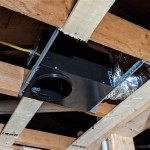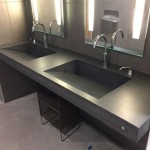Bathroom Ventilation Code Requirements
Proper ventilation is crucial in bathrooms to maintain a healthy and comfortable environment. It helps to remove moisture, odors, and harmful pollutants, preventing mold growth, mildew, and respiratory problems. Building codes establish minimum ventilation requirements for bathrooms to ensure these health and safety standards are met. These codes are enforced to create a safe and livable living environment for all.
Minimum Ventilation Requirements
Building codes typically specify minimum ventilation requirements based on the size of the bathroom. The most common method of ventilation is through exhaust fans. These fans are designed to remove air from the bathroom and vent it outside. The minimum cubic feet per minute (CFM) required for an exhaust fan is determined by the square footage of the bathroom. For example, a standard bathroom of 50 square feet might require a 50 CFM fan, while a larger bathroom of 100 square feet might require a 100 CFM fan. In addition to the minimum CFM requirement, codes may also specify the type of fan required, such as a duct-mounted fan or a direct-vent fan.
Location and Installation
The location and installation of the exhaust fan are also critical elements addressed in building codes. For optimal performance, the fan should be positioned near the source of moisture and odors, such as the shower or tub. It is essential to ensure the fan is installed correctly to prevent leaks and ensure proper venting. Codes usually specify guidelines for the location of the vent termination, ensuring it is directed outside the building and away from windows, doors, and air intakes. This prevents exhaust from contaminating the interior air and creates a clean and healthy environment.
Other Ventilation Strategies
While exhaust fans are the primary method of ventilation, other strategies can also be employed to improve air quality in bathrooms. These include:
- Natural Ventilation: Opening windows and doors can provide natural ventilation, especially in areas with good airflow. While this may not be sufficient for long periods of hot, humid days, it can help to improve ventilation and reduce moisture buildup.
- Humidity Control: Maintaining low humidity levels in the bathroom through the use of dehumidifiers or other moisture-absorbing materials can help prevent condensation and mold growth. This can be especially helpful in bathrooms with limited ventilation.
- Air Filtration: Installing air filters in the bathroom can remove airborne particles and pollutants. This can improve air quality and reduce the risk of respiratory problems. Although air filters do not specifically address moisture, they can help to maintain a better overall air quality.
It is crucial to consult local building codes and professional contractors to ensure compliance with the specific ventilation requirements for a particular area. The goal is to provide a safe and healthy environment for all bathroom users. Proper ventilation not only improves air quality and reduces the risk of mold and mildew but can also enhance the overall comfort and aesthetic appeal of the bathroom.

Code Requirement For Bathroom Vent Location Exhaust Checkthishouse

Bathroom Exhaust Fans Building America Solution Center

Do You Need A Fan In Bathroom With Window Hvac Boss

We All Like To Vent Dealing With The Hot And Moist Air Ncw Home Inspections Llc

Bathroom Exhaust Vents In Your San Antonio Area Home Jwk Inspections

Ventilation Pa Energy Code

Learn Rules For Bathroom Design And Code Fix Com

How To Vent A Toilet Sink And Shower Drain

3 Bathroom Exhaust Fan Venting Options Codes

Ventilation Pa Energy Code







